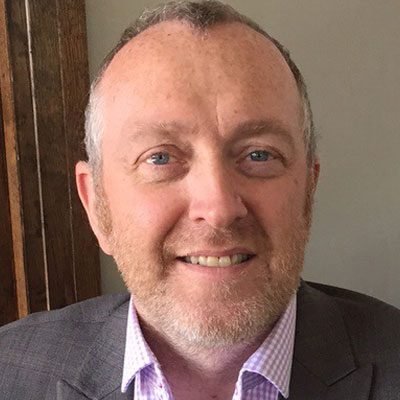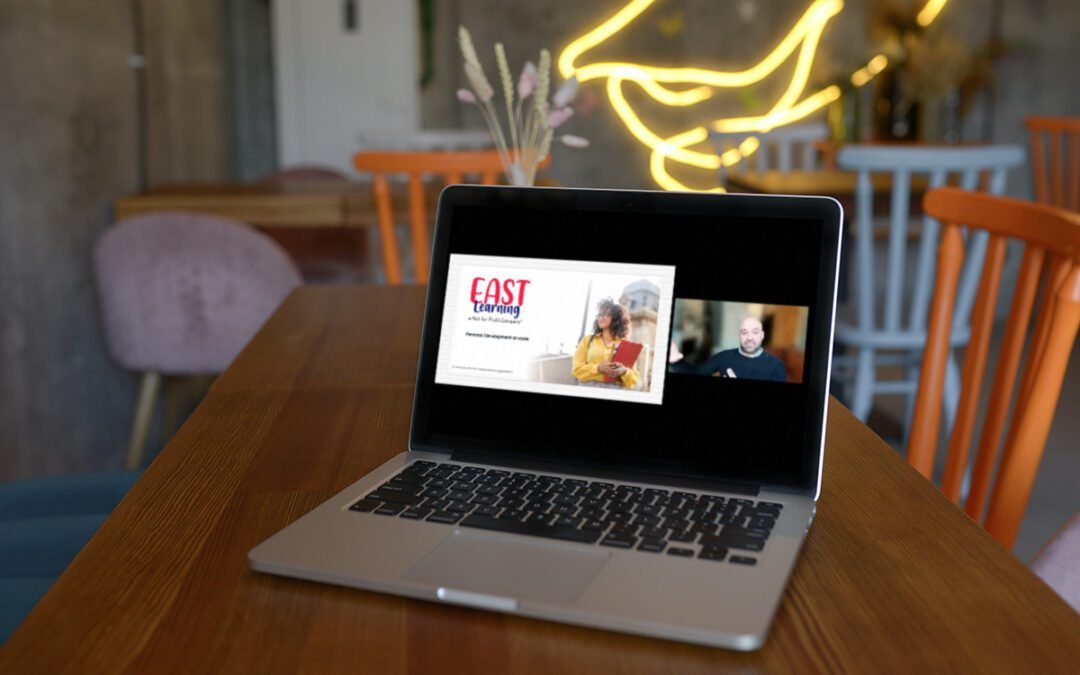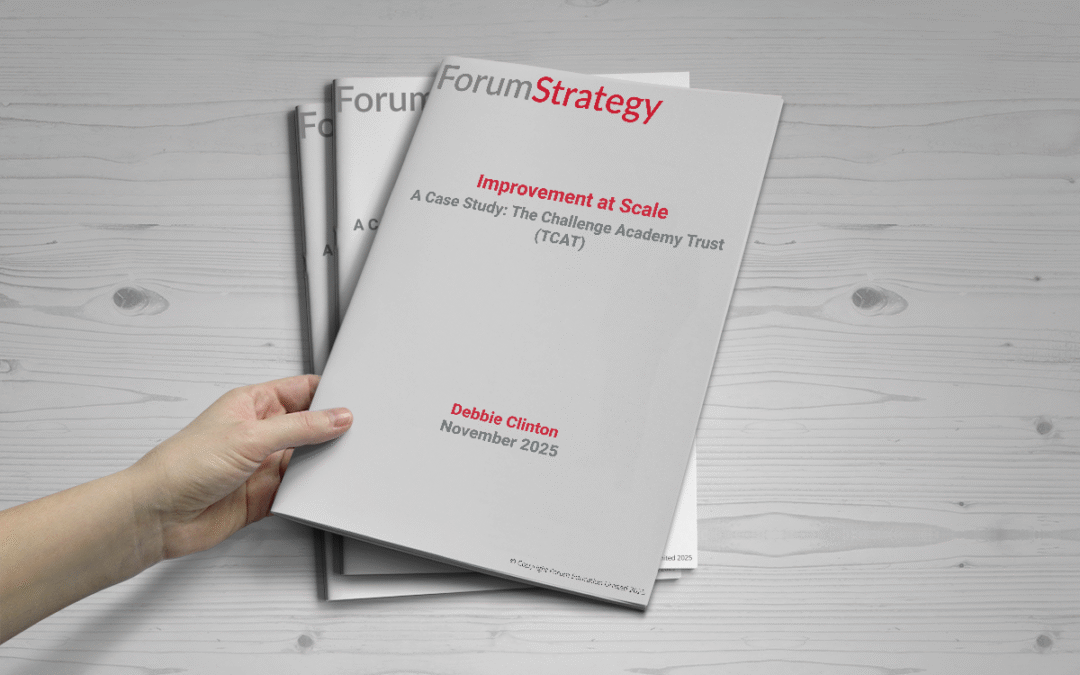
Sir Steve Lancashire joins Forum Strategy as Chair of our National #TrustLeaders CEO network. Here is his first monthly article for our members and partners.
‘What an adventure!’ said Alice. Sums up nicely my experience of the last 10 years as founder and first Chief Exec. of REAch2. It’s a saying that’s used widely across the Trust to either celebrate a positive outcome or lament something we really rather wish hadn’t happened. It’s used a bit like Kipling’s ‘If you can meet with triumph and disaster and treat those two imposters the same’. It’s apt because after these ten years, if there’s one thing I’m sure of, it is that as Trust leaders we will experience the good and the bad. Years when results are great, inspections go well, schools get built and whatever is in our strategic plan gets delivered. Then there are those times when you fall down the rabbit hole and the world looks entirely different. A poor inspection, a nasty incident in a school, a major safeguarding issue, key staff leaving or something else that pushes us off centre. It took me a good few years to realise that, as a CEO, this is life as we know it, forever, and the best way to deal with it is to focus on the end game and not get embroiled in annual soul searching. Sure, reflect on the pros and cons of the year, but keep a sense of perspective and react proportionately to both imposters. It’s a strategy that has helped me cope with this very difficult job we all do.
“as a CEO, this is life as we know it, forever, and the best way to deal with it is to focus on the end game and not get embroiled in annual soul searching.”
Adventure is not a word I use lightly as I reflect upon my own story of growth and development as a CEO. The (over?) regulated, highly accountable, risk averse system we find ourselves part of today is a world away from the ‘Academy sector wild west’ of 10 years ago when I first called myself ‘CEO’ without having a clue what it really meant or entailed. It seems inconceivable now that Trusts, and hence CEOs, would be put through beauty parades competing against each other to win the hearts and votes of governing bodies, or face angry and abusive communities enraged at ‘forced’ academisation. That a CEO could negotiate twelve sponsored academies in one year, all over the country, or bid for, and secure, twenty-two free schools in one go. It’s not nostalgia that prompts me to offer this description of times gone by – because there is no way I’d want to return to it – more an explanation that my own journey as a CEO is probably atypical. Nevertheless, I hope these reflections on ‘What worked for me’ will be helpful to colleagues currently in the role.
It’s a month now since I handed over the CEO baton and the most frequent question I’ve been asked is ‘How do you feel?’ Easy! A mixture of pride, relief and excitement. I’m proud of the organisation I helped build. I won’t bore you with too many details, but sixteen thousand children are now in a good or better school that weren’t previously, that starting from a base of 9% of its schools being good, the Trust now has 96% of schools good or better, and that a recent staff survey showed 96% of staff in our schools feel they are well respected, well looked after, and are happy. The relief comes from – it’s a tough job, you never stop worrying about it, it can be all-consuming and, at times, very lonely. There are also those ‘rabbit holes’ I mention above that come along to test us to our limit. There are two particularly memorable ones for me, (which are by no means of equal magnitude). Firstly, the ESFA deciding that the whole REAch2 structure of umbrella Trust over ten MATs was illegal, issuing us with a notice of dissolution, and threatening legal action against the CEO (!). And secondly, very early on, a real time phone call with one of our directors who was on site at an inspection asking what to do as a parent was smoking pot outside the inspectors’ window. (Waft it away and move them on was the best I could come up with). Whilst it is the most professionally rewarding role I’ve ever done, there is a sense of ‘My part in this story is done, time for someone else to shoulder the responsibility’.
“what a privilege to be part of such a tremendous network of CEOs, and I hope as Chair of the network I can offer something of value.”
The best part is the excitement I feel on two fronts. Firstly, the Trust is in good hands, and I don’t need to worry about it, but also, selfishly, I can now throw myself into what I equally love doing; supporting and mentoring other Chief Executives and Executive Leaders, helping Trusts grow and develop, and giving back to a sector that has given me so much. It’s why I was delighted that Michael Pain offered me the opportunity both to Chair Forum Strategy’s National CEO network and mentor on the ‘Being the CEO’ programme. Michael was the first person to recognise that the sector needed this kind of support and I wish I’d had his book and programme ten years ago. Similarly, what a privilege to be part of such a tremendous network of CEOs, and I hope as Chair of the network I can offer something of value.
Being The CEO
We are looking forward to shortly welcoming participants of the seventh cohort of Forum Strategy’s #BeingTheCEO programme, a programme for aspirant and serving CEOs who are keen to further their development and find the time and space to reflect, guided by experts. The programme will run from June 2022 until February 2023. The deadline for applications is 14th May 2022.
The programme is led by Michael Pain, author of the seminal book, ‘Being The CEO’ and founder of Forum Strategy – a leading national consultancy supporting CEO learning and development; together with Sir Steve Lancashire, recently retired from his position as one of the country’s most experienced trust Chief Executives, having overseen a trust grow sustainably and successfully to more than sixty schools over the last decade.
So, on to what’s worked for me. Two things I’d like to focus on in this blog. ‘Being’ the CEO in terms of knowing yourself, knowing what value you bring to the organisation and being an authentic CEO, and then on ‘Doing CEO type things’, which is about what we actually do or should be doing in our role.
On the first, CEO know thyself. There are two good reasons that I’ve stepped down now and not in five or ten years time as I could have done. I’m a big believer in the Sigmoid curve and Handy’s interpretation of it. Under this, organisations and, I would suggest, people (AKA CEOs) go through three phases: the learning phase, growth phase, and the decline phase. According to Hardy, the success of an organization is linked to being aware of where they are on the curve, between growth and decline, and doing something about it at the right time before decline sets in. That ‘something’ might be organisations reinventing themselves or doing something radically different. I would suggest that this applies to us all as CEOs too and it is about the relative value we add to our organization, particularly over time. Since we are the highest paid, we should consistently add the most value.
The ‘Being the CEO’ programme is very much about this first phase and is a respectable recognition that for many the role of CEO is relatively new and, as such, we are obliged to learn as much as we can, to become as knowledgeable and capable as we are able. This is as it should be and will last a certain amount of time. The challenge, I think, is when the organization is at that point where initial growth has taken place, incremental improvement has gone as far as it can go, and where our well-tried strategies and ‘business as usual’ activity only does so much. Where we, as CEOs, need to offer something different in our leadership to take the organization to the next level. A key skill, I believe, is in recognizing this point and, as Handy says, doing something about it. This might be in changing Trust strategy, developing new ways of working, branching out into a new sector, or bringing fresh ideas into the executive team. The CEO network can provoke us and help us develop connections that – as established CEOs – give us important value in this regard.
Last year, given our shared experience of the pandemic and reflecting on how best to continue to serve our school communities, I realized that REAch2 was at that point on the Sigmoid curve, and I was at that point in my CEO tenure, where we both should do something entirely different. My choice was to reinvent myself or leave. The decision for me to step down was, I hope, an honest recognition that there were people better placed to take the Trust forward, people who could add more value. Honest evaluation of what value we add as CEO doesn’t, of course, need to end in stepping down, but it does require action on our part, and it’s a question I think we all should ask ourselves at intervals.
The second dimension to ‘know thyself’ which has helped me is the understanding that leadership needs to be about collective capacity and efficacy and not personal status; knowing when to put the job title aside and let someone else lead something or do something because they are better at it has served me well. For example, unusually, I was not the Accounting Officer for REAch2 because I have a problem understanding figures, spreadsheets, statistics, numbers; I’ve struggled my whole life with it. I coped for a while but as the Trust got bigger and the numbers larger, I couldn’t put my hand on my heart and say I could be an effective Accounting Officer and give the Board etc. the assurance they needed. Swallowing ego and acknowledging that the COO, a trained accountant, was much better placed to do this, and securing agreement for this to happen was one of the best decisions I ever made. So much better for the Trust and all concerned to get an expert to do it. Of course, there had to be absolute trust between us, and it is a bit of a deficit (no pun intended) model, but it brought home to me that my real job as CEO was to make the organisation as effective as possible by allowing those most skilled and capable to do the job at hand. This helped us all as an Executive team reframe our thinking about who did what and think about what I now call ‘best placed leadership’. There are numerous examples at every level of the Trust now where job title has been put aside, and those best placed to lead something, lead it. To me it’s not about someone not being able to do their job, it is about securing excellence, releasing potential and utilizing, in full, collective capacity.
The final bit of ‘Being’ the CEO is about being authentic. I personally value this above all else and I see it in two ways; being true to yourself – and being yourself – and they are different. For me, authenticity is the extent to which what a person believes is consistently reflected in what they say and what they do, and one of the factors central to any notion of authenticity must surely be consistency, both over time and across different situations. I think there are three variables at play here; the integration and interaction of values, language, and actions, in a way that demonstrates integrity and trustworthiness. We only have to look at government right now to see what happens to authenticity and trust when actions don’t match words (or laws) and what people say they value is not borne out in their actions.
“The biggest thing I coach new CEOs on is how to relax, let people see the real you, and not worry too much about what people think. The best CEOs, I think, have the confidence to do this..”
My approach to this has been to externalize my values i.e. tell everyone, everywhere across the organisation what I believe and hold dear and invite them to challenge me if they think I’m not being consistent with them. It has happened a couple of times and I’ve welcomed it. I think this in itself builds trust and credibility. On the being yourself, the biggest thing I coach new CEOs on is how to relax, let people see the real you, and not worry too much about what people think. The best CEOs, I think, have the confidence to do this and realise that consistent values, language and action will make sure people form the right impression and will ensure authenticity. Who doesn’t love a bit of sparkle? So let that personality shine, I say. People will follow you to the end of the earth if they know you are genuine and you bring colour to their professional life.
On to my second reflection, if there’s one thing I feel very strongly about it’s that the CEO should do ‘CEO type things’. As I’ve become a more mature and, hopefully, more effective CEO, it’s something that I’ve given a lot of thought to and, in the last few years, committed, through self-discipline to putting into action. I recognise, of course, that it’s contextual and circumstances vary and that it’s usually tied to size and capacity, but the CEO really ought to be focusing on all things strategic and getting out of the weeds of management and, even worse, administration. I have always found distinguishing between these three things a helpful exercise in deciding where to focus effort and attention. A few years ago, John-West Burnham, in our coaching, helped me bring clarity to the inter-relation and difference between these three things and encouraged me to see them as a continuum (with Leadership activity on the left and administration on the right) and devised a model to exemplify.
In this approach, the difference between the three is exemplified in terms of the principle of each activity, the purpose and how this involves people. In this model, Leadership defines the values, the purpose and secures the engagement of stakeholders (people), Management translates principle into consistent practice, and Administration ensures organizational neatness. As far as the principle is concerned, Leadership is ‘doing the right things’, Management is ‘doing things right’ and administration is simply ‘doing things’. The Purpose of leadership is ’path making’, of Management ‘path following’ and Administration’ path tidying’ and finally, in terms of people, Leadership engages with the complexity of stakeholders, Management creates clarity and administration secures consistency. The challenge which John rightly presented me with was ‘How much time are you spending on each activity?’ because, he argued, ‘the more time you spend on the left of the continuum, the better CEO you will be and the more likely you are to succeed in realising your ambitions, and the more on the right, the less effective your Trust will be and, to be blunt, the less effective you will be as a CEO’.
“Great CEOs play the ‘big game’, they focus on the top 3-5 most important initiatives and they dedicate 90% of their time, energy and resources to these.”
He was right, and it led me to really question everything I did each week, month and year. This view is supported by most research into CEO effectiveness and I was always minded by the McKinsey research which found that the distinction between good CEOs and great CEOs is the ability to focus. Great CEOs play the ‘big game’, they focus on the top 3-5 most important initiatives and they dedicate 90% of their time, energy and resources to these. The say ‘no’ often and they don’t allow their time to fill up with different activities and different priorities. Less effective CEOs are weaker at prioritisation, allow their time to be filled up with other things (management and administration), and fit in the important initiatives around the ‘day job’. I support the view that great CEOs delegate the running of the Trust to an effective executive or leadership team. They make themselves unnecessary to the day-to-day operation of the Trust so that they can focus on the future.
Jeff Bezos says he spends 5% of his time running his company. I didn’t quite get to that point, but a fair estimate would be that over the last 5 years I spent a good 85% of my time on leading the Trust (setting strategy, securing alignment, leading the executive team, managing talent, protecting the culture, engaging with the Board and other stakeholders) and not managing it or ‘tidying up’. I think it’s one of the reasons that we responded to the challenges of the pandemic so well and are in as strong a position as we have ever been. People I work with will quote a phrase I often say (I think it’s mine and I haven’t assimilated it from somewhere else). ‘The quality and effectiveness of your organisation will be directly proportionate to the quality of your thinking about it’. CEOs think more than they do. Over to you!
Sir Steve Lancashire is Chair of the National #TrustLeaders CEO network . He will be contributing to the National #TrustLeaders Symposium on 8th June 2022, together with Sir Michael Barber and Maggie Farrar. He is also providing mentoring support to CEOs through Forum Strategy. To find out more information, please email us at admin@forumstrategy.org .


